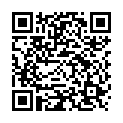|
|
|
| Module code: UI-BTE |
|
|
2V (2 hours per week) |
|
3 |
| Semester: 3 |
| Mandatory course: yes |
Language of instruction:
German |
Assessment:
Written exam 180 min.
[updated 28.02.2024]
|
UI-BTE (P251-0012) Environmental Technologies, Bachelor, ASPO 01.10.2021
, semester 3, mandatory course
UI-BTE (P251-0012) Environmental Technologies, Bachelor, ASPO 01.10.2023
, semester 3, mandatory course
|
30 class hours (= 22.5 clock hours) over a 15-week period.
The total student study time is 90 hours (equivalent to 3 ECTS credits).
There are therefore 67.5 hours available for class preparation and follow-up work and exam preparation.
|
Recommended prerequisites (modules):
UI-BIO Biology
UI-GCL Fundamentals of Chemistry (with Lab Course)
[updated 22.02.2024]
|
Recommended as prerequisite for:
|
Module coordinator:
Prof. Dr. Timo Gehring |
Lecturer: Prof. Dr. Timo Gehring
[updated 04.08.2023]
|
Learning outcomes:
After successfully completing this module, students will be able to:
- name recent applications of biotechnology and describe their relevance.
- describe the chemical structure of amino acids and explain the different levels of protein structure, including primary structure, secondary structure, tertiary structure and quaternary structure.
- name examples of proteins in nature and in the human body and describe their functions.
- acknowledge carbohydrates and polysaccharides as the basic building blocks of life and understand their functions in nature and in the human body, e.g. blood groups.
- explain how glycogen develops and breaks down.
- distinguish between saturated and unsaturated fatty acids and explain the importance of omega-3 fatty acids. They will also be able to describe the structure and function of lipids, fats and double lipid layers in biological systems.
- They will be able to: describe the structure of nucleic acids and nucleotides and explain the processes of DNA replication, transcription and translation.
- explain the dogma of molecular genetics and describe biotechnological tools and techniques such as restriction enzymes, vectors, plasmids, cloning, PCR, genetic fingerprinting, lac operon and CRISPR-CAS9.
- describe the process of photosynthesis and explain the use of photobioreactors for the biotechnological cultivation of algae.
- describe the process of biotechnological production of insulin in the form of two modern industrial processes
[updated 28.02.2024]
|
Module content:
Relevance of biotechnology using current examples.
Amino acids and proteins as the basic building blocks of life: chemical structure of amino acids, chirality, primary structure, secondary structure, tertiary structure, quaternary structure, disulfide bridges. Examples and functions of proteins in nature and in the human body. GFP and insulin
Carbohydrates and polysaccharides as the basic building blocks of life: Examples and functions of carbohydrates in nature and in the human body Blood groups and glycogen
Fats and lipids as the basic building blocks of life: saturated and unsaturated fatty acids Omega-3 fatty acids Micelles and double lipid layer formation Examples and functions of lipids and fats in nature and in the human body
Nucleic acids and nucleotides as the basic building blocks of life: structure of nucleotides, structure of RNA and DNA
DNA replication, dogma of molecular genetics, transcription and translation. Restriction enzymes, vectors and plasmids with cloning, PCR, genetic fingerprinting, lac operon, CRISPR-CAS9
Photosynthesis and photobioreactors Biotechnological cultivation of algae
Biotechnological production of insulin
[updated 28.02.2024]
|
Teaching methods/Media:
Blackboard, independent work with script and texts, PowerPoint presentations, films, interactive tests in Moodle, warm-ups, group work
[updated 28.02.2024]
|
Recommended or required reading:
German:
Biotechnologie für Einsteiger, Renneberg, ISBN 978-3-662-56283-3
Lehrbuch der Molekularen Zellbiologie, von Jochen Graw (Herausgeber), Bruce Alberts et al., ISBN: 978-3527347797
Taschenatlas der Biotechnologie und Gentechnik, Schmid, Rolf D., ISBN: 978-3-527-33514-5
Bioprozesstechnik, Horst Chmiel, Springer, ISBN: 978-3-8274-2477-8
English:
Brock Biology of Microorganisms, Daniel H. Buckley, ISBN: 978-1-292-40479-0
Biochemical Pathways Poster
French:
Biochimie et biologie moléculaire Taschenbuch, Christian Moussard, ISBN-13:978-2807322158
Molekülbaukasten
[updated 28.02.2024]
|

